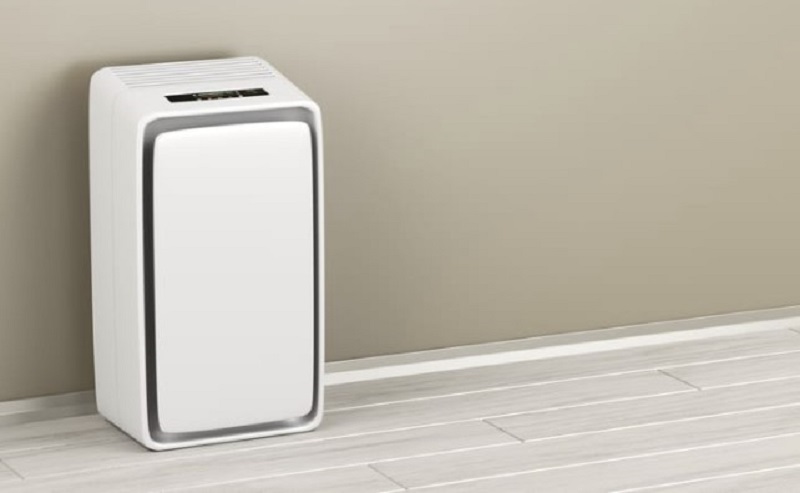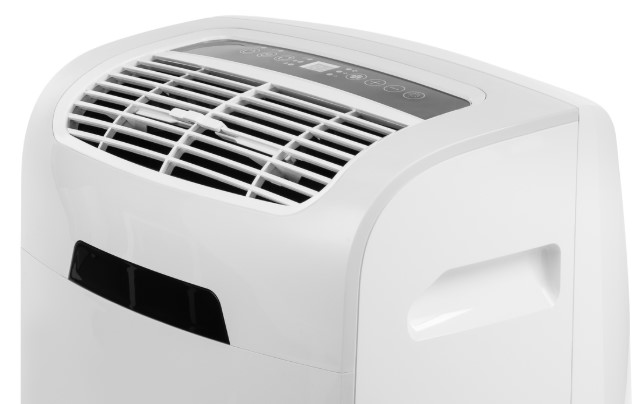Basements have various issues when it comes to indoor moisture control and air quality. Excessive moisture is the primary reason why your garage is damp. The dampness comes as a result of water leaks or high humidity levels in your room.
High humidity can become an excellent environment for mold growth and can cause structural damage to your home as well as other health issues. Consider installing a dehumidifier for the cold basement to lower high moisture and humidity levels.

But what does a dehumidifier do in a basement during winter? Does it help in any way? Well, running a dehumidifier in your basement in winter is crucial because it helps to prevent condensation on the surfaces of the room.
Furthermore, the dehumidifier will help to get rid of mold growth on floors, ceilings, and walls. When it operates continuously, it will also eliminate odor in the garage.
How does a dehumidifier work in a basement?
When you install a dehumidifier in your basement, the device will take in ambient air from the surrounding and cool it off. It will then condense the air and collect water in its default tank, hence helping to reduce excess moisture. After collecting the water, the unit will blow the processed air back into space.
But for this to work well, the dehumidifier must have a higher capacity to remove water from the tank automatically. Since it will be working continuously in the cold winter temperatures, it must be powerful enough to control humidity without breaking down.
Will a dehumidifier in the basement help the whole house?
Too much condensation in your basement can affect other rooms in the upper levels of your home. When the basement gets damp, it is because moisture is penetrating through the foundation and entering your house through water leaks.
It can also be due to high levels of humidity inside your house. Using a dehumidifier can help to maintain the right levels of humidity at around 45%.

If you notice that walls in the upper levels of your house are getting damp as a result of the wetness in your garage, you will have to install a dehumidifier. Also, do the same if you notice signs of condensation on surfaces or water on the floor because this indicates a rise in moisture through your home’s foundation.
But rather than using a basement dehumidifier, use a whole-house dehumidifier. It will dehumidify the basement and the entire house. Whole-house dehumidifiers have large fans that pull more air over the coils. The coils then draw in more moisture from the air and lower it to a level that prevents dampness and odors.
Where to place a dehumidifier in the basement?
If there is a lot of moisture accumulating in your basement, you will need a dehumidifier that is powerful enough to get rid of the dampness. The unit works best when placed in an enclosed area.
Before you put it in your garage, you need to ensure that you have closed any openings, such as doors and windows. Other factors to consider before placing the machine in your basement include:
- The size or capacity of the dehumidifier.
- The size of your basement.
- The levels of humidity in the basement.
Generally, if you are using a small dehumidifier with little moisture problems, place the unit on the floor to control humidity levels. The device will blow out warmer air than the air entering inside. Therefore, installing the machine near the ceiling will limit the convention circulation.
If you have a large basement in an area with lots of moisture content, the best place to install the dehumidifier is near a sink. That will allow the unit to self-drain instead of you doing it manually.
But if you want to increase the rate of dehumidification, consider putting the machine in the middle of the room. It will help to achieve maximum airflow and reduce energy consumption.
Conclusion
So, does a basement need a dehumidifier? Your basement needs a dehumidifier whenever there is visible mold growth on the floors, ceilings, walls, and other surfaces of the room.
You also need to install it to control the high levels of humidity experienced in the winter. The best place to install the unit is in the middle of the room to allow for maximum airflow and reduce energy consumption.
